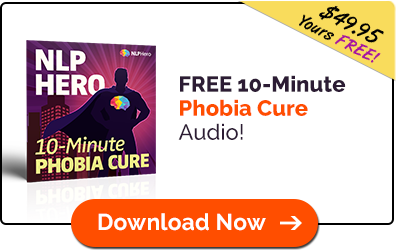Are you tired of relying on pain medication to manage your chronic pain? If so, you’re not alone.
Many people are turning to non-pharmacological approaches for pain management that offer long-term benefits without the risks associated with prescription drugs.
Massage therapy is a popular option that can help reduce muscle tension and increase blood flow to affected areas.
Acupuncture is another alternative that involves the insertion of thin needles into specific points on the body to stimulate natural healing processes.
Cognitive-behavioral therapy focuses on changing negative thought patterns and behaviors that contribute to pain, while meditation and mindfulness help promote relaxation and reduce stress levels.
Lastly, physical therapy and exercise can improve flexibility, strength, and overall mobility, all of which can help alleviate chronic pain symptoms.
With so many options available, it’s worth exploring these non-pharmacological approaches as a way to manage your chronic pain more effectively.
Massage Therapy
 You’ll love how the skilled hands of a massage therapist work out the tension and knots in your muscles, leaving you feeling relaxed and rejuvenated.
You’ll love how the skilled hands of a massage therapist work out the tension and knots in your muscles, leaving you feeling relaxed and rejuvenated.
Massage therapy is a non-pharmacological approach to managing chronic pain that involves various massage techniques such as Swedish, deep tissue, trigger point, and myofascial release. These techniques help to increase blood flow, reduce muscle tension and inflammation, improve range of motion, and promote relaxation.
The benefits of massage therapy go beyond just relieving physical pain. It can also help alleviate symptoms of anxiety, depression, insomnia, and stress-related disorders. Additionally, it can improve immune function by increasing the activity level of natural killer cells which fight off viruses and other harmful pathogens in the body.
Moreover, regular massages can promote an overall sense of well-being by reducing levels of cortisol (the stress hormone) in the body.
Massage therapy is a safe and effective alternative to traditional pain management methods that rely on medication or surgery. It has been shown to be particularly effective for those suffering from chronic conditions such as fibromyalgia or arthritis.
So why not give it a try? You might find that regular massages become an integral part of your pain management routine – helping you feel more relaxed both physically and mentally!
Acupuncture
Acupuncture can help alleviate discomfort and improve overall well-being, making it a popular choice for those seeking natural pain relief.
This traditional Chinese medicine practice involves the placement of very thin needles into specific points on the body to stimulate energy flow and promote healing.
Acupuncture has been used for thousands of years in China and is now widely accepted as an effective alternative therapy in Western medicine.
The needle placement techniques used in acupuncture are based on the concept that there are over 2,000 points on the body that are connected by pathways or meridians. These pathways allow energy, or Qi (pronounced ‘chee’), to flow through the body.
When this flow is disrupted or blocked, pain and illness can occur. By inserting needles into specific points along these meridians, acupuncturists aim to restore balance and promote healing.
Many people find acupuncture to be a safe and effective way to manage chronic pain without relying on medication.
It has been shown to be beneficial for conditions such as back pain, headaches, arthritis, menstrual cramps, and fibromyalgia.
While some people may experience mild discomfort during treatment, most find it relaxing and even feel energized afterwards.
If you’re considering trying acupuncture for your chronic pain, be sure to seek out a licensed practitioner who has had formal training in this technique.
Cognitive-Behavioral Therapy
If you’re feeling stuck in negative thought patterns that exacerbate your discomfort, cognitive-behavioral therapy (CBT) can help. It can help you identify and challenge those thoughts to improve your overall well-being.
CBT for chronic pain is a form of psychotherapy that aims to modify dysfunctional behaviors and attitudes that contribute to physical distress. It’s based on the idea that how we think affects our emotions and behaviors, which in turn affect our physical sensations.
CBT techniques typically involve identifying negative thoughts related to pain, challenging them with evidence-based reasoning, and replacing them with more helpful ways of thinking. For example, instead of catastrophizing about the future or ruminating about past failures, CBT may encourage patients to focus on their present moment experiences and practice mindfulness meditation or relaxation exercises.
The goal is not to eliminate pain entirely but rather to develop coping strategies that reduce its impact on daily activities. Research has shown CBT for chronic pain can be effective in reducing symptoms such as anxiety and depression, improving quality of life, and increasing functional ability.
Unlike some other non-pharmacological approaches like acupuncture or massage therapy, CBT requires active participation from patients who are willing to work collaboratively with their therapists over several weeks or months. If you’re considering this approach as part of your pain management plan, it’s important to find a licensed mental health professional who has experience working with chronic pain patients and uses evidence-based methods tailored to your unique needs.
Meditation and Mindfulness
Meditation and mindfulness are effective techniques for reducing anxiety and improving overall well-being. These practices involve focusing your attention on the present moment, thereby helping to reduce stress, pain, and other negative emotions.
Mindful breathing is a simple yet powerful technique that involves taking deep breaths while being aware of your thoughts and feelings. This type of meditation can help you relax and become more centered.
Another type of meditation that is often used for pain management is body scan meditation. This technique involves lying down or sitting comfortably while slowly scanning your body from head to toe, paying close attention to any sensations or discomfort you may feel along the way. By focusing on these areas of tension or pain, you can learn to release them through relaxation exercises such as gentle stretching or visualization.
Mindfulness has been shown to be particularly effective in managing chronic pain because it helps individuals develop greater awareness of their body’s sensations and responses to stressors. By learning how to tune into the signals your body sends out when you’re under stress or experiencing pain, you can begin to identify patterns that exacerbate discomfort or trigger flare-ups.
With practice, mindfulness can help you manage these symptoms more effectively by promoting relaxation, reducing anxiety levels, and improving overall physical function without the need for prescription medications or invasive procedures.
Physical Therapy and Exercise
Physical therapy and exercise can be effective ways to improve your physical function and overall well-being without relying on medication or invasive procedures.
Functional movement exercises are designed to help you move better, with less pain and discomfort. These exercises focus on improving the way your body moves by targeting specific muscle groups that may be weak or tight. By doing functional movement exercises regularly, you can improve your range of motion, flexibility, and stability.
Resistance training is another non-pharmacological approach to managing chronic pain that involves using weights or resistance bands to strengthen muscles. This type of exercise helps build muscle mass, which can help support joints and reduce pain associated with conditions like osteoarthritis. Resistance training also increases bone density, which is important for maintaining strong bones as you age.
Incorporating physical therapy and exercise into your pain management plan can offer numerous benefits beyond just reducing pain levels. It can also improve your mood, increase energy levels, and boost self-confidence.
If you’re new to exercise or have a pre-existing condition that limits your mobility, it’s important to work with a qualified professional who can design an appropriate program tailored specifically to your needs and abilities. With consistent effort over time, physical therapy and exercise can significantly improve your quality of life without relying on medications or invasive procedures.
What are the potential risks or side effects of using non-pharmacological pain management techniques?
Safety concerns and effectiveness analysis are important factors to consider when using non-pharmacological pain management techniques.
Did you know that according to the National Institutes of Health, over 80% of adults will experience back pain at some point in their lives?
While techniques such as acupuncture, massage therapy, and mindfulness meditation have shown promise in managing chronic pain, it’s important to note that these methods may not be suitable for everyone.
Safety concerns include risk of injury during certain exercises or therapies, while side effects such as discomfort or temporary worsening of symptoms may occur with others.
It’s always best to consult with a healthcare professional before beginning any new form of treatment.
Are there any dietary changes or supplements that can aid in pain management?
Nutritional supplements and an anti-inflammatory diet may aid in pain management. Omega-3 fatty acids found in fish oil supplements have been shown to reduce inflammation and alleviate joint pain.
Turmeric, a spice commonly used in Indian cuisine, also has anti-inflammatory properties and can be taken as a supplement or added to meals. Vitamin D supplements may help with chronic pain conditions such as fibromyalgia.
Additionally, an anti-inflammatory diet rich in fruits, vegetables, whole grains, and lean protein sources may reduce inflammation throughout the body. Avoiding processed foods and excess sugar may also assist in managing chronic pain symptoms.
It’s important to consult with a healthcare provider before starting any new nutritional supplements or making significant dietary changes for pain management purposes.
How long does it typically take to see results from non-pharmacological pain management techniques?
Waiting for results can feel like an eternity, but when it comes to non-pharmacological pain management techniques, patience is key.
While some people may see improvements after just a few sessions, it’s important to remember that everyone’s body and pain levels are different.
It could take several weeks or even months of consistent practice before you notice any significant changes in your chronic pain.
However, the benefits of patience are clear – by sticking with your chosen technique and giving it time to work its magic, you may find long-lasting relief from your pain without relying on medication.
So keep at it and don’t give up – the importance of consistency cannot be overstated when it comes to managing chronic pain naturally.
Can these techniques be used in conjunction with traditional pain medications?
Combining pain medications with non-pharmacological techniques and complementary therapies can be an effective way to manage chronic pain.
Non-pharmacological techniques such as meditation, acupuncture, and massage therapy can help reduce stress and tension which, in turn, may decrease the need for pain medication.
Additionally, using these techniques alongside traditional pain medications may result in a lower dosage requirement or extended time between doses.
It’s important to discuss any changes in medication or treatment plans with your healthcare provider to ensure safe and effective management of chronic pain.
Are there any financial resources or insurance coverage options available for non-pharmacological pain management treatments?
If you’re looking for financial assistance or insurance coverage options for non-pharmacological pain management treatments, there may be resources available to you.
Some health insurance plans cover certain alternative therapies such as acupuncture, chiropractic care, and massage therapy. It’s important to review your plan’s benefits and limitations to see what is covered.
Additionally, some nonprofit organizations offer financial assistance programs specifically for individuals seeking non-pharmacological pain management options. Researching these resources can help alleviate the financial burden of pursuing alternative therapies.
So, there you have it – pain management alternatives that can help you manage chronic pain without relying on medication. These non-pharmacological approaches are worth exploring if you’re looking for ways to relieve your discomfort and improve your quality of life.
Remember, managing chronic pain is a journey, not a destination – it takes time and effort to find what works best for you. But with the help of these alternative therapies, along with guidance and support from healthcare professionals, you can take control of your pain and live a fulfilling life.
Don’t be afraid to try new things and keep an open mind – who knows what might work for you? At the end of the day, it’s all about finding what makes you feel comfortable in your own skin.









